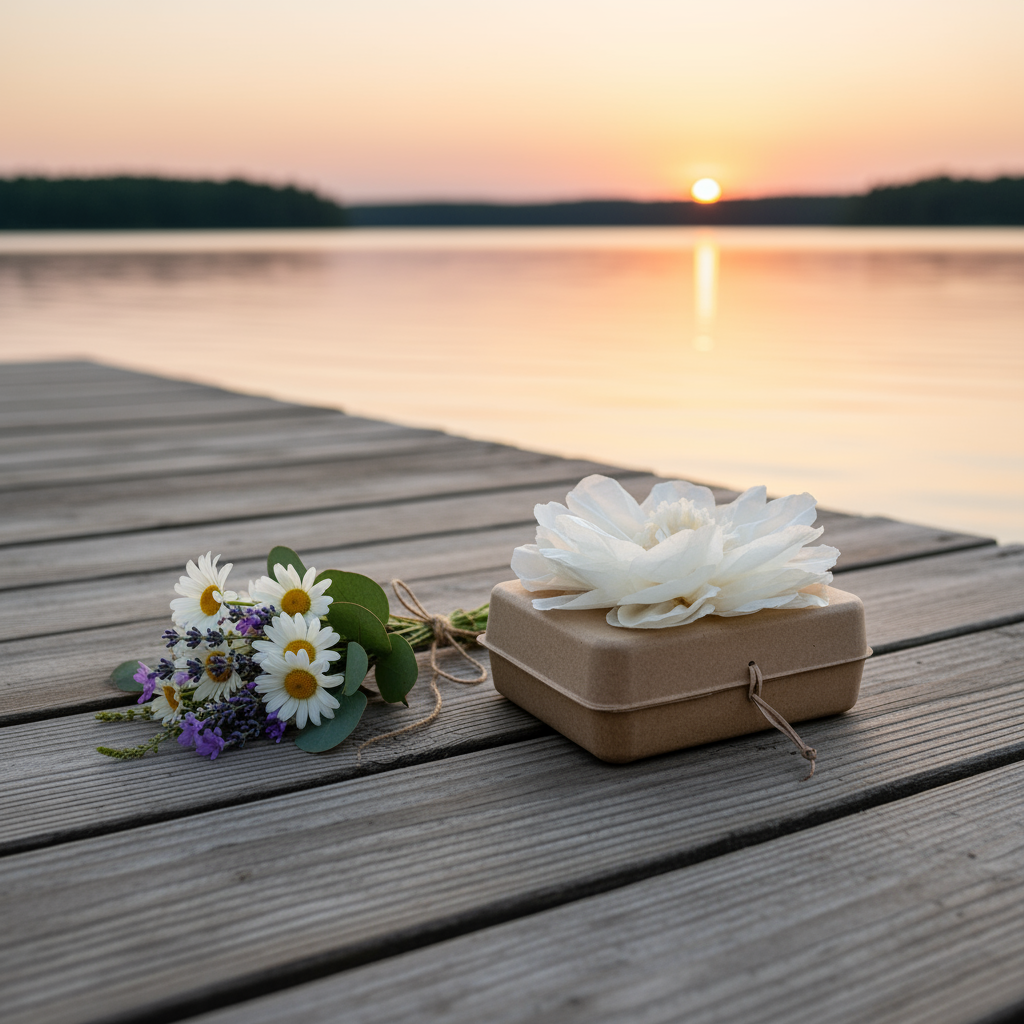
Return to Where Love Lived: Choosing a Meaningful Place in Nature for a Farewell
Lately, many families have written to me with the same quiet truth: we chose a place where they were happy. A lake where a father fished at sunrise. A quiet dock where a mother read in the afternoon light. A trail, a beach, a field that felt like home. Every story carries the same thread—returning to nature, and returning to where love lived.
I’ve come to believe the where matters as much as the how. A farewell in nature—simple, eco-friendly, and heartfelt—becomes even more intimate when it happens in a place that shaped their life and still holds yours. It’s not only about scattering ashes or burying a biodegradable urn; it’s about creating a place to return when you need to remember, breathe, and feel close again.
Why the Place Matters
When we choose a meaningful location, we do two things at once: we honor who they were, and we anchor ourselves. The lake, the grove of trees, the shoreline—these become living memorials. You can visit when the seasons turn, bring flowers in spring, sit in silence in winter, and let the place keep telling their story back to you.
In my experience, the right place feels like a gentle “yes” in the body. You stand there and something inside settles. Sometimes it’s obvious, sometimes it arrives as a memory mid-drive or a photo you can’t stop looking at. Trust that feeling.
How to Choose Your Place (Gentle Questions to Guide You)
-
Where were they most themselves? A lake, garden, mountain, beach, forest path?
-
What sounds and textures surrounded their joy? Water lapping, wind in the reeds, pine needles underfoot.
-
What can we return to with ease? A place the family can access over time—nearby, safe, welcoming.
-
What aligns with their values (and yours)? Nature-based, minimal impact, simple and sincere.
If more than one place feels right, that’s okay. Love is not singular. Some families choose mini biodegradable urns so siblings or close friends can hold small, personal ceremonies in locations that mattered to them, at the same hour, under the same sky.
Keeping It Eco-Friendly (and Beautiful)
A nature-based farewell can be both tender and responsible. A few principles I hold close:
-
Use biodegradable materials. A biodegradable water urn for lakes or ocean; a soil-friendly urn for burials. No plastics, glitters, balloons, or synthetic ribbons.
-
Choose native petals or simple flowers. They return gently to the ecosystem.
-
Leave no trace. Take everything back with you—boxes, bags, notes—so the place remains as you found it.
-
Check local guidelines. Each lake, river, or shoreline may have rules for scattering or burial. A quick call or website check helps you arrive with respect.
These little choices add up to a big gesture: a farewell that cares for the Earth that cared for us.
A Simple Ceremony by the Water (and Ideas for Any Landscape)
There’s no script to follow, but here are elements families often find meaningful:
-
Arrival & breath. Stand together. Feel your feet on the ground. Let the place greet you.
-
Words or silence. Share a memory, read a short poem, or hold a minute of quiet. Both are sacred.
-
Music. A single song from a phone can open a soft space for feeling.
-
The release.
-
Water: Hold the biodegradable urn for a moment, speak their name, then set it gently on the surface and watch as it floats, sinks, and dissolves.
-
Earth: Place the urn in the soil, cover it slowly, then plant wildflower seeds or a native plant above.
-
-
A closing gesture. Petals on the water, hands on each other’s shoulders, a candle at home that night, a shared meal.
If children are present, give them a role—a flower to place, a story to tell, a small stone to set by the water. Participation turns fear into tenderness.
Making It a Place to Return
Grief changes over time, but it never asks us to forget. Choose a simple way to keep the connection alive:
-
Visit on a birthday or favorite season.
-
Keep a small “map of love”: date, weather, a line you read, a photo of the horizon.
-
Bring the same flowers every year, or the same song.
-
If it’s a lakeside ceremony, notice the water level, the birds, the light. Let nature mark the passage with you.
These rituals don’t trap you in the past—they help you keep loving in the present.
If There Isn’t Just One Place
Sometimes a life is many places. That’s okay. You might:
-
Hold a primary ceremony at the most meaningful spot, and smaller, personal releases elsewhere.
-
Share ashes in mini urns so each person creates their own moment, their own rhythm of goodbye.
-
Choose one location now, and another in a year. Grief is allowed to unfold in chapters.
I often say: we’re not only returning a loved one to nature; we’re returning ourselves—our attention, our breath, our gratitude. The world moves fast, but these ceremonies slow us down. They turn a lake, a path, a shore into a whisper we can visit anytime: I’m here. You are loved. Keep going.
If you’re choosing a place right now, I hope it meets you with gentleness. And if a biodegradable urn—for water or earth—supports your ceremony, I hope it helps you focus on what matters most: being there, together, in a place where love once lived and still does.
With tenderness,
Virginia
